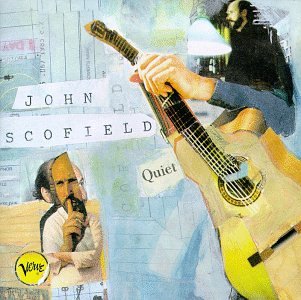Introduction:
Certain albums stand out for their unique perspectives, engaging compositions, and significant musical statements in the extensive jazz environment. The well-known guitarist John Scofield’s album “Quiet” is one such example. “Quiet,” which was released in 1996, is a prime example of Scofield’s artistic vision as he explores a more reflective and acoustic territory. The album transports listeners on a reflective journey with a brilliant cast and a selection of evocative pieces, making a significant contribution to the jazz genre. In this article, we will delve deeper into the details of “Quiet,” looking at the album’s track listing, critical reception, and superb ensemble.
The Album “Quiet”:
“Quiet” marks a departure from John Scofield’s more electrified and groove-oriented works, as he chooses to exclusively play acoustic guitar on this album. Recorded in April 1996 at The Power Station in New York City and Pyramid Sound in Los Angeles, “Quiet” captures a distinct atmosphere of serenity and introspection. Scofield enlists the talents of renowned musicians such as saxophonist Wayne Shorter, bassist Steve Swallow, drummers Duduka da Fonseca and Bill Stewart, and a remarkable horn section, resulting in a rich tapestry of sound and emotion.
Help yourself to some live jazz, and help the artists and clubs fulfill their dreams. Sign up to Oh! Jazz to watch live and on-demand performances. 25% of your subscription goes back to the artists and 10% to the clubs.
Learn more about Oh! Jazz here.
A Musical Journey:
The tracks on “Quiet” reflect Scofield’s compositional prowess and his ability to evoke a range of emotions through his music. From the melodic and reflective opener, “After the Fact,” to the atmospheric and introspective “Tulle,” each composition invites listeners into a world of musical introspection. The interplay between Scofield’s delicate acoustic guitar, Shorter’s soulful tenor saxophone, and the harmonically rich arrangements creates an enchanting sonic landscape that captivates from start to finish.
Ensemble Dynamics:
The ensemble assembled for “Quiet” is a testament to Scofield’s ability to curate a group of exceptional musicians who can bring his compositions to life. Wayne Shorter’s masterful saxophone playing adds a layer of emotional depth and lyrical beauty to the album. Bassist Steve Swallow, a longtime collaborator of Scofield’s, provides a solid and melodic foundation, while drummers Duduka da Fonseca and Bill Stewart offer rhythmic intricacy and sensitivity. The horn section, consisting of Randy Brecker, John Clark, Fred Griffen, Howard Johnson, Lawrence Feldman, Charles Pillow, and Roger Rosenberg, brings additional colors and textures to the arrangements, enhancing the album’s sonic depth.
Critical Acclaim:
“Quiet” has received widespread critical acclaim, with many recognizing its significance within Scofield’s discography and the jazz genre. The Penguin Guide to Jazz Recordings selected the album as part of its suggested “core collection” of essential recordings. Critics have praised the album’s lyrical beauty, the musicians’ synergy, and Scofield’s ability to create a tranquil and immersive listening experience. “Quiet” showcases Scofield’s versatility as an artist, demonstrating his willingness to explore new sonic territories while maintaining his unique musical voice.
“Quiet” stands as a testament to John Scofield’s artistry and his ability to create evocative and introspective jazz compositions. Through his acoustic guitar, Scofield invites us into a world of sonic serenity and contemplation. The collaboration with a stellar ensemble, including Wayne Shorter, Steve Swallow, and a remarkable horn section, elevates the album to new heights. With its captivating compositions and tranquil atmosphere, “Quiet” remains a significant milestone in Scofield’s career and a must-listen for jazz enthusiasts seeking a deeper connection to the music.
References:
- Cook, R. & Morton, B. (2008). The Penguin Guide to Jazz Recordings. Penguin Books.
- Larkin, C. (2006). Encyclopedia of Popular Music. Oxford University Press.
- “Quiet” album cover art. Retrieved from https://en.wikipedia.org/wiki/File:Quiet_John_Scofield.jpg

Leave a Reply